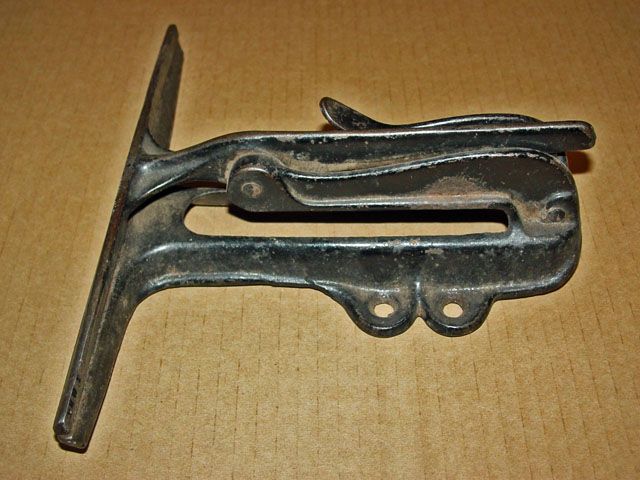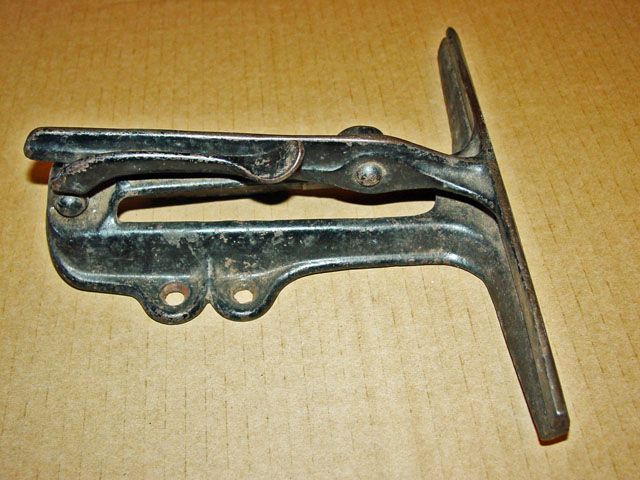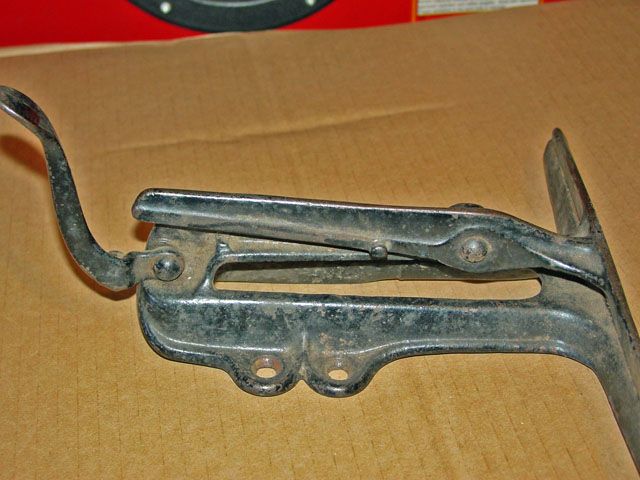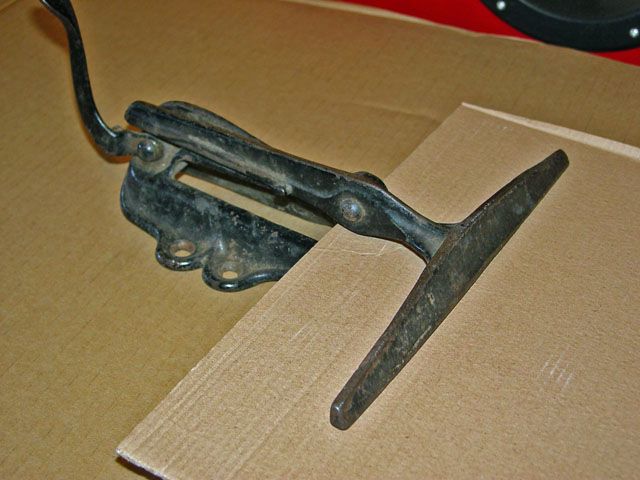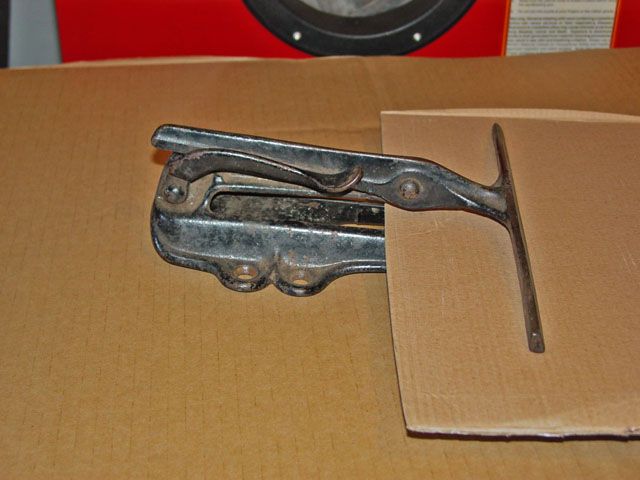There is a cast in place there and I tried to see what it said, I tried cleaning off the top of the letters then I tried to lightly bead blast the area leaving a lot of paint still in the area. The area but is just too worn (or obliterated which I doubt as my grandfather was not that kind of person) to make anything out. The letter/ID area was just too poorly cast; e.g., not deep enough as what paint I removed was original paint as far as I can tell. I have seen some older castings that did have their logos not cast in well.
I just tested the area to see if my very light glass bead blasting may have done some damage (other than to the paint) and the metal is too hard to make that light bit of work I did do any damage other than to the enamel paint; the paint that was deep in casting pockets is still there so I don't think I harmed the casting as it is just as obscure as it was with paint. Also, it does not look like the casting has been repainted but does it look like it was attached to something at one time of another. I tried putting ink over the area then rubbing the top of each letter but the letters are just cast too low to read with one or two exceptions.
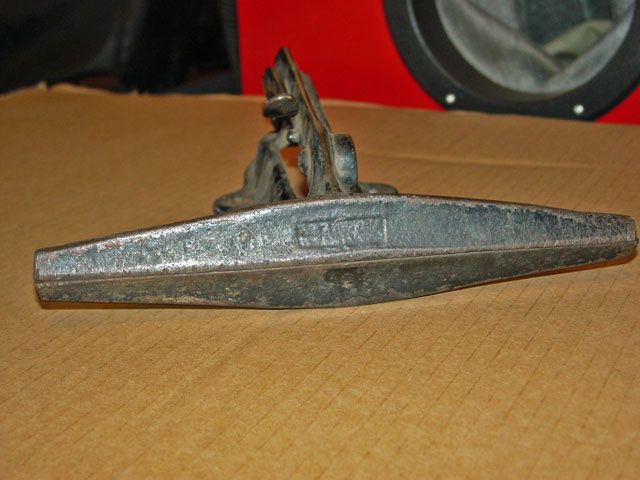
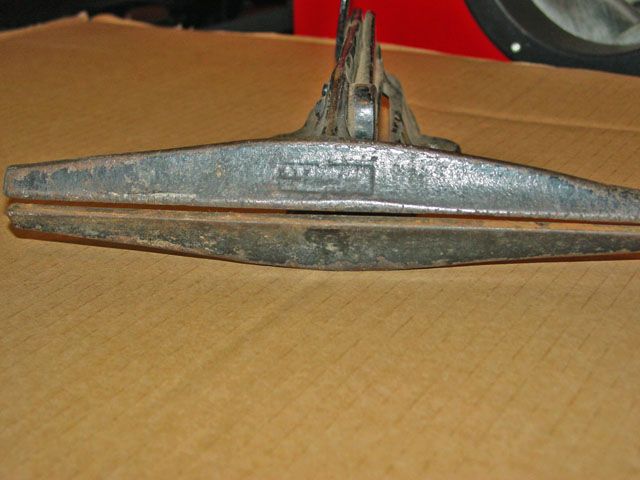
I just brought it in to look at again and I put it under a 6" magnifying light. The upper jaws are marked with what looks like cuts and bangs along the whole length except in the center if the upper jaw which is smooth and worn up on the jaw kind of like sanding was done; this is just below the casting ID area. Looking closely at the ID area some of the letters look like they had been banged a lot or rust was there as they had rough tops, not like sanding obliteration but either rust or being banged but the paint was still there covering them before bead blasting.
The lower jaw looks to be largely untouched.
I can't think of anything that would require something like this other than maybe a note holder mounted on a wall. I do agree that it is designed to be attached to something but the two groups of holes are too close together to indicate it is designed for great pressures to be applied. After some of the thoughts given, I now question my thoughts that it is a lightweight bending tool (wishful thinking on my part I guess).
Max opening on the jaw is ~ 3/16th of an inch. Running a straight edge and feeling with fingers plus there are runs of the original paint that have not been worn off, in the wear area where the locking mechanism slides on the upper jaw lock and surfaces on the locking lever itself are not worn that much so the tool couldn't have been used too much. I thought it might be used to set the teeth on a saw but that is just a guess too; why the marks on the upper jaw and not the lower jaw. The width of the jaw is a bit over 9 1/2".
If anyone wants more pictures I can do that otherwise I think I have beat this to death too.
Lee
